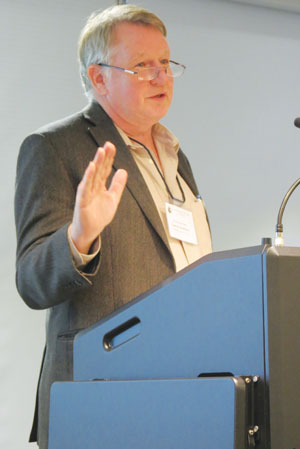Despite a letter bomb that left her severely injured this summer, lawyer Maria Mitousis is emphasizing her plan to resume her practice.

“What happened on an ordinary Friday afternoon in the summer was unprecedented, frightening, confusing,” wrote Mitousis in a letter to The Advocates’ Society ahead of an event in Toronto last Monday to raise more than $10,000 to help her recovery.
Despite her ordeal, Mitousis emphasized that she intends to return to practice.
“While I do believe what happened to me was an isolated, terrible act, I know that when I return I will be viewing my practice differently and I will be more mindful of personal safety issues. I am proud of my role in the family justice system; I am convinced more now than before that the majority of people who interact within the system appreciate and value the work and services that the lawyers and other professionals provide. That’s why I’m optimistic about returning.”
Mitousis, 38, sustained several serious injuries in the July attack, including the loss of one hand. At a panel held as part of the event last week, lawyers noted threats against them aren’t uncommon. “As family lawyers, we’ve all had the experience of hang-up phone calls, people looking at us oddly
. . . and we’ve all had the experience of getting back to the office after a very busy day and tending to mail and getting a package from someone you don’t know. So there, but by the grace of God, go any of us,” said lawyer Aaron Franks during the Sept. 28 discussion.
A panel of three experts who addressed the crowd of lawyers, judges, and paralegals warned they must be as vigilant in protecting themselves as they are about adhering to the letter of the law.
“It’s a very conscious pattern of thought that’s designed to help all of us identify, assess, and manage risk,” said lawyer Hilary Linton of Riverdale Mediation.
“Unfortunately, these cases aren’t random anomalies; these are often predictable and preventable risks,” she added. “One of the patterns we see in all of these cases is people, often families, often friends, have intuitions that something might happen.”
Particularly in family court, she said, fear is an immediate indicator of potential trouble.
“We see often that people who are at risk are afraid,” said Linton.
“We want to, as professionals, take that very seriously as a predictor of risk. There is a direct relation between family law and spousal homicide. We know that spousal homicides are the most predictable and preventable of all types of murder. We also know that the people who are at risk are at greatest risk when they are going through a separation agreement and when they are in contact with lawyers.”
Linton said that when lawyers are gauging potential risk with a high-conflict client, they should look into patterns of past abuse or violence and consider those who are controlling over their spouses or have prior convictions, histories of substance abuse or mental-health issues as warning signs.
“We’ve evolved to the point, as professionals, where we have an emerging duty of care to pay attention, to recognize when a client or an opposing party, not just our client, is being abused,” said Linton. “Take this into account when making strategic decisions as lawyers. The decisions that counsel make and mediators make can expose them to risk of retaliatory harm as well as the parties.”
During the discussion, Justice John McMahon of the Superior Court spoke about courtroom safety, saying “the safety and security of everybody — the litigants, the lawyers, the staff, and everyone — has to be a paramount cornerstone of our justice system.”
“What has happened, and I see it time and time again, is that the respect for our justice system with the litigants has diminished,” he said.
“If we don’t take the threat seriously, we empower the person doing the threat,” he added.
McMahon said lawyers need to be aware of their client’s risk of violence before entering the court and express any concerns to court security in order to make arrangements for an increased presence or alter the locations of security officers.
A veteran of the RCMP, Sgt. Mark van den Eerenbeemt, gave his views on how legal professionals could recognize and limit a potentially violent situation. He said one of the best defences to a situation like the one facing Mitousis is to simply be aware of the type of mail coming into the office each week and note anything anomalous, such as lopsided packaging with far too much postage that’s oily or greasy, has misspelled names or locations or carries a note that a particular person should open it.
Van den Eerenbeemt said those with street-level offices should look into their exterior lighting and landscaping to eliminate places for people to hide themselves or dangerous items. He suggested security cameras should all be high definition but he noted the best surveillance is through the lawyer keeping accurate notes on a client’s demeanour and tracking any escalation or change toward a position of conflict.
“I believe it is extremely important to you to get a baseline idea of your client — who your client is, what makes them tick, find out what they do outside of work and their lifestyle,” said van den Eerenbeemt.

 “What happened on an ordinary Friday afternoon in the summer was unprecedented, frightening, confusing,” wrote Mitousis in a letter to The Advocates’ Society ahead of an event in Toronto last Monday to raise more than $10,000 to help her recovery.
“What happened on an ordinary Friday afternoon in the summer was unprecedented, frightening, confusing,” wrote Mitousis in a letter to The Advocates’ Society ahead of an event in Toronto last Monday to raise more than $10,000 to help her recovery.